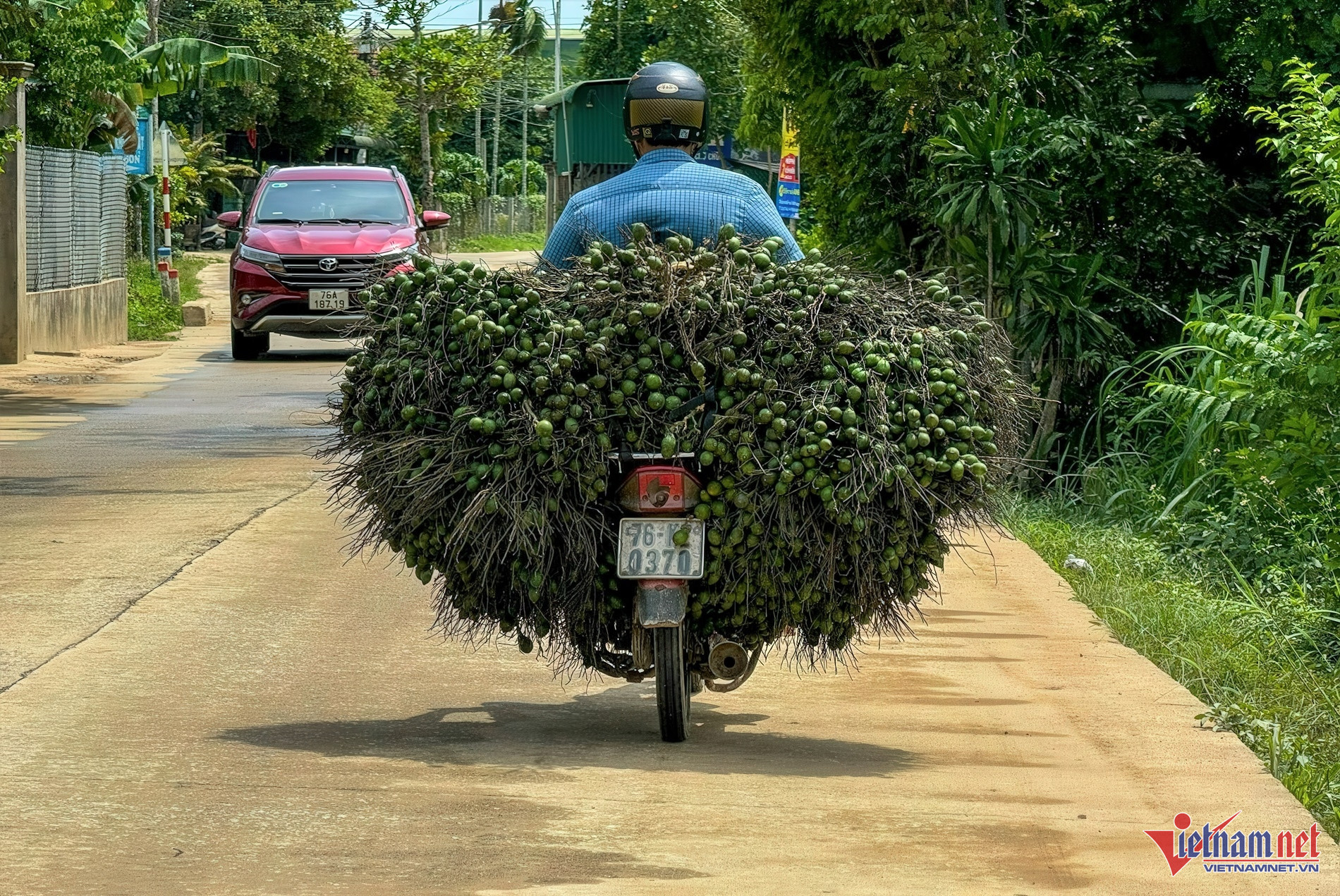Within just two weeks, the price of fresh areca nuts has plunged from 90,000 VND (nearly $4) per kilogram to 25,000 VND ($1), primarily due to decreased purchasing from China. After a period of record highs, the price of fresh areca nuts in Quang Nam and Quang Ngai has nosedived.
In these regions, local traders typically visit small farms to buy the nuts directly, then resell them to agents or drying facilities for export to China.
Mr. Nguyen Van Nghia, a resident of Tam Xuan Commune, Nui Thanh District, Quang Nam Province, explained that prices surged for six consecutive months, at one point exceeding 100,000 VND per kilogram at the processing plants, driven by China’s strong demand.
However, two weeks ago, prices sharply declined. Local collection points have seen erratic pricing, with some temporarily closing, causing small traders like Mr. Nghia to hesitate, fearing potential losses.
"Chinese traders have become more selective, so the drying facilities have scaled back, only buying high-quality areca nuts to store. It’s possible China has nearly met its supply needs or is holding back to drive prices down. Recently, prices have stabilized somewhat, so we’ve resumed harvesting," Nghia said.
As of October 29, fresh areca nuts bought directly from farms in Quang Nam and Quang Ngai range from 25,000-30,000 VND per kilogram, a third of what it was in early October.
Mrs. Nguyen Thi Lan, who lives in Tien Ky Town, Tien Phuoc District, Quang Nam, cultivates 500 areca nut trees, with over 200 currently yielding fruit. Each tree produces four to five clusters of nuts per season, with each cluster weighing 3-5 kilograms.
Since June, Mrs. Lan has sold areca nuts for between 40,000-90,000 VND per kilogram. However, she was taken aback by the rapid price drop in the past two weeks.
"At the start of October, one quintal of fresh areca nuts was worth as much as a small piece of gold. Just a week ago, I sold them at 40,000 VND per kilogram; now it’s only 30,000 VND. Thankfully, it’s the end of the season, and I’ve already sold several batches at higher prices, so I don’t regret it," she said.
Despite the price plunge, Mr. Le Thanh Tu, from Hanh Duc Commune, Nghia Hanh District, Quang Ngai Province, remains optimistic. He noted that fluctuations in areca nut prices are common, with prices as low as 2,000 VND per kilogram in past years. This year, prices started at 40,000 VND per kilogram and remained high for a significant period. For large-scale growers, this translated to substantial earnings. His family’s 500 areca nut trees generated over 300 million VND.
“Although the price is down, 25,000 VND per kilogram is still favorable. For us, areca nut cultivation is minimally demanding yet highly profitable compared to other crops,” Tu shared.
Ms. Tran Thi Luan, who owns an areca nut drying facility in Tien Lanh Commune, Tien Phuoc District, Quang Nam, told VietNamNet that the price drop stems from difficulties in exporting to China.
Yet, the situation has stabilized, and her facility continues to purchase areca nuts to fulfill orders.
"Prices declined from a peak of 110,000 VND per kilogram (for de-clustered nuts at the drying facility) to 40,000 VND two days ago, and now slightly up again to 45,000 VND. Although lower, this rate remains higher than in previous years, so farmers still see a profit," Luan explained.
Ms. Luan clarified that differences between farm prices and facility rates stem from labor costs, transport, depreciation, and other expenses.
Mr. Dam Bang, Vice Chairman of Nghia Hanh District People’s Committee (Quang Ngai), noted that the district has approximately 800-900 hectares of areca nut trees. However, this is not a primary crop, and local authorities have discouraged mass planting in recent years.
Mr. Bang pointed out that demand remains unpredictable and relies heavily on Chinese traders; when demand falls, locals often resort to cutting down trees. Consequently, areca nuts are not included in the district’s agricultural development plans.
Ha Nam
